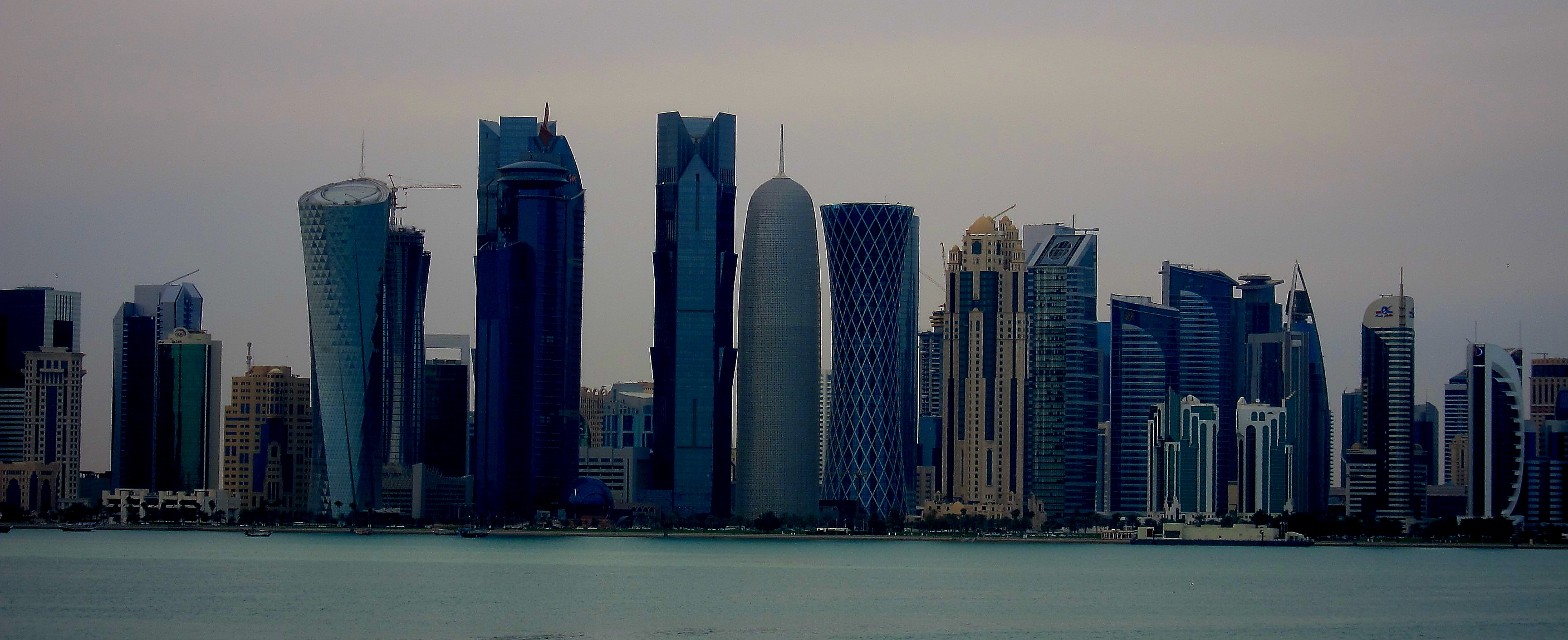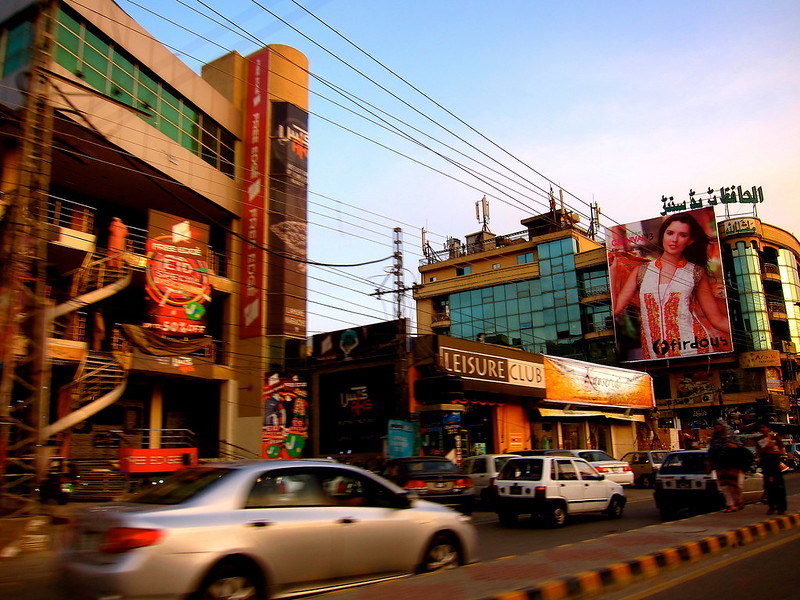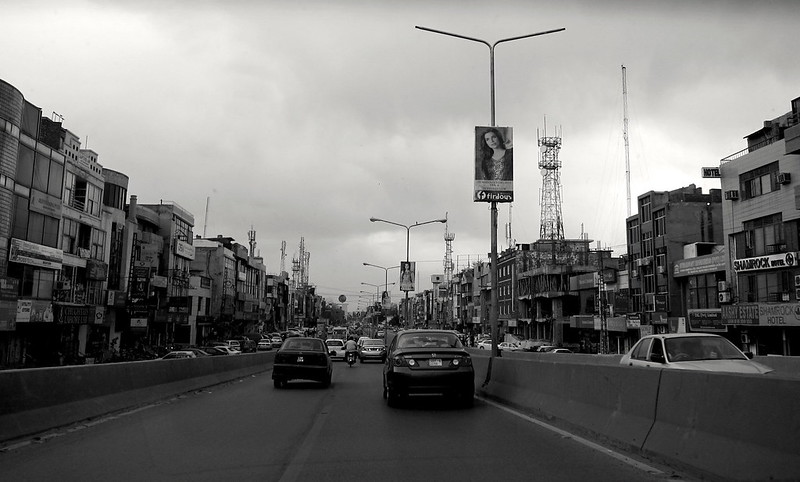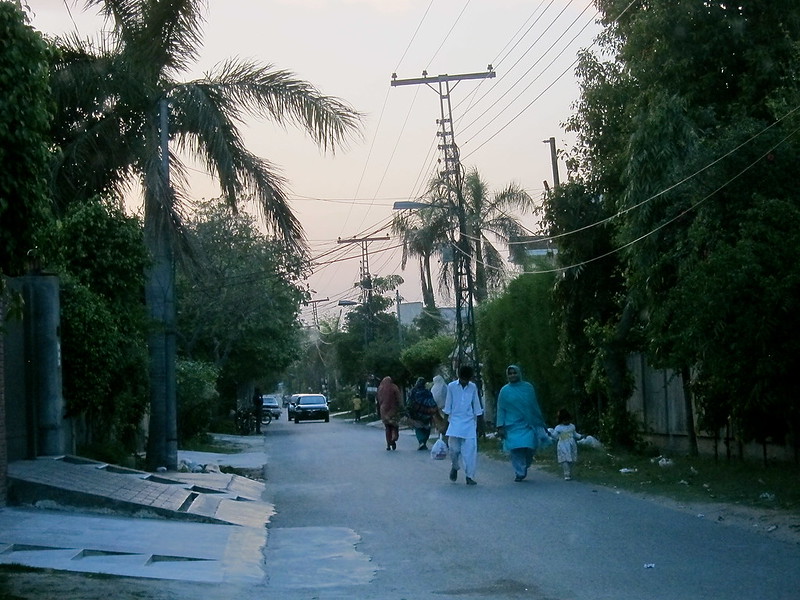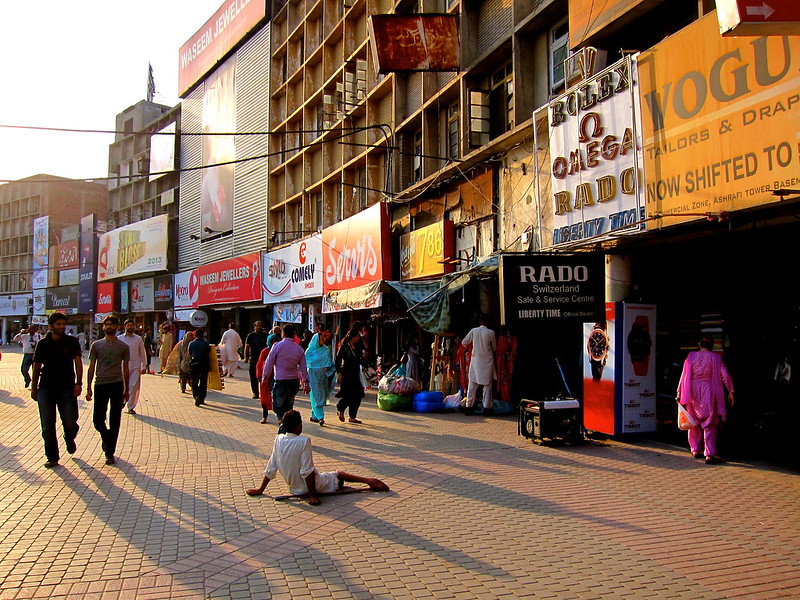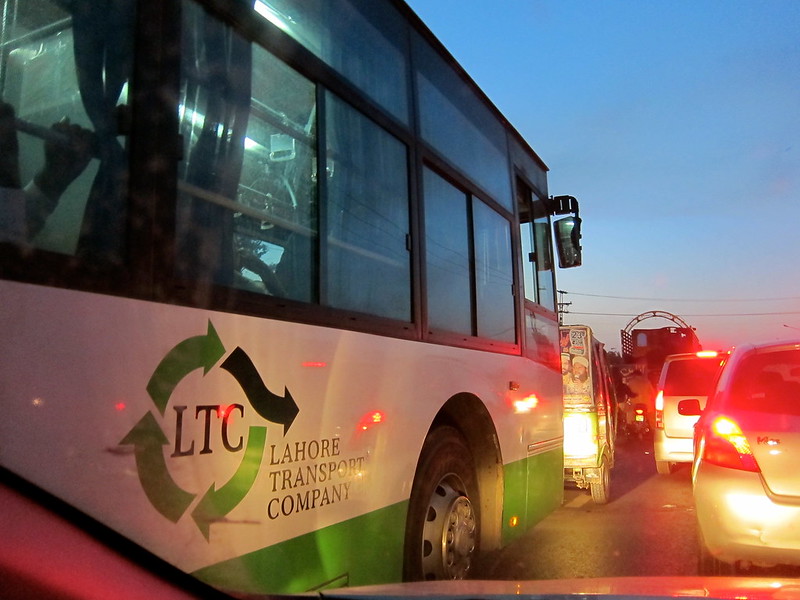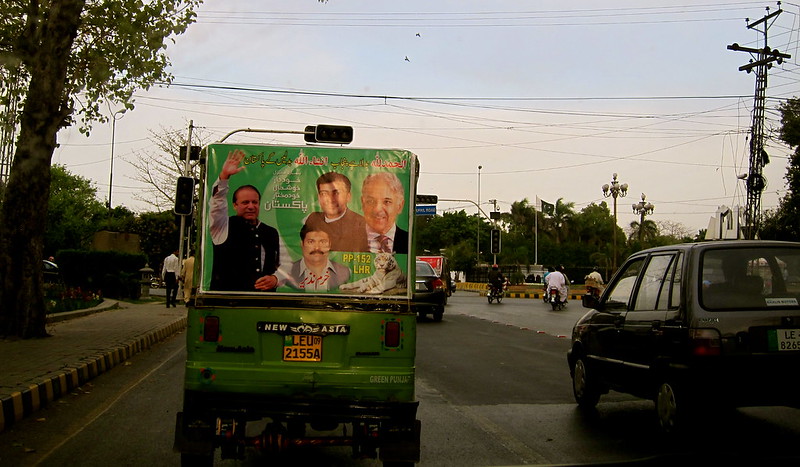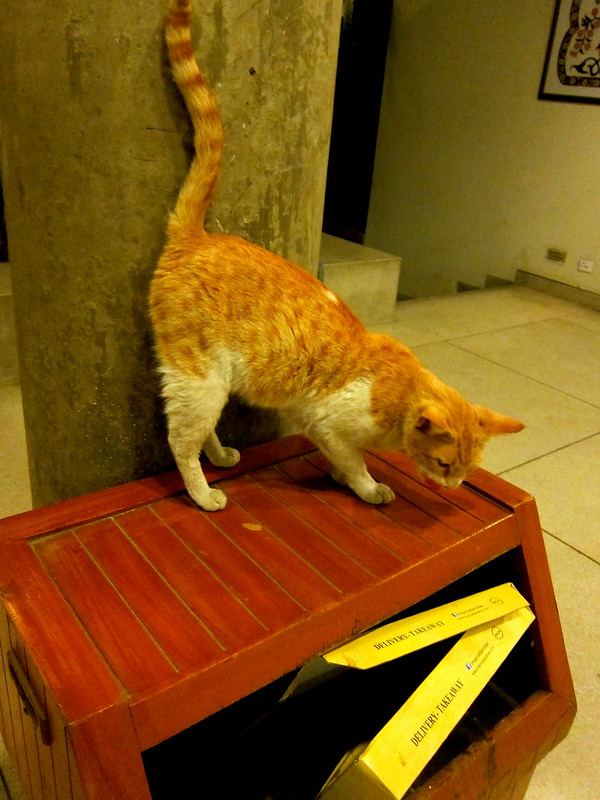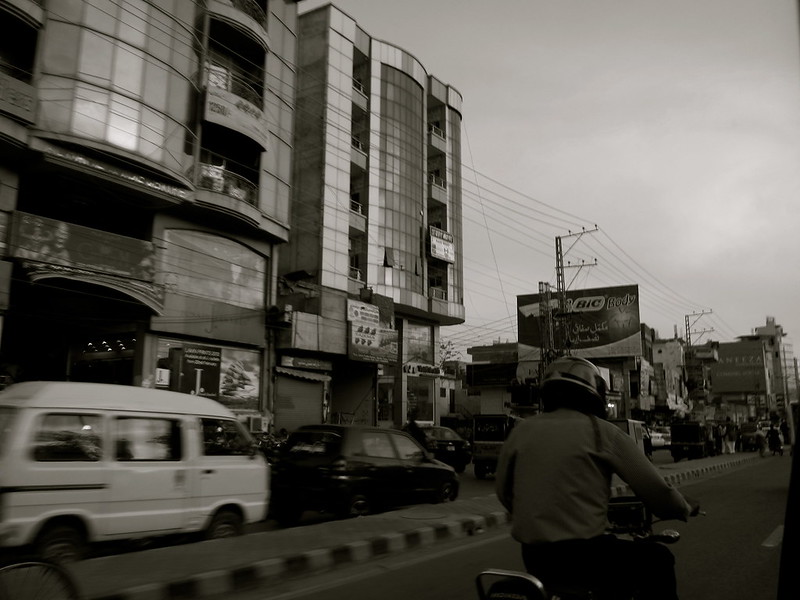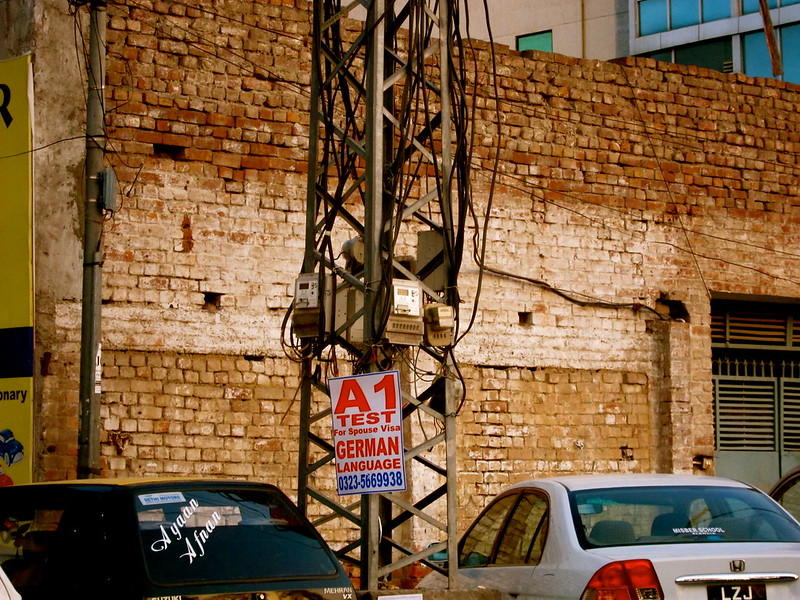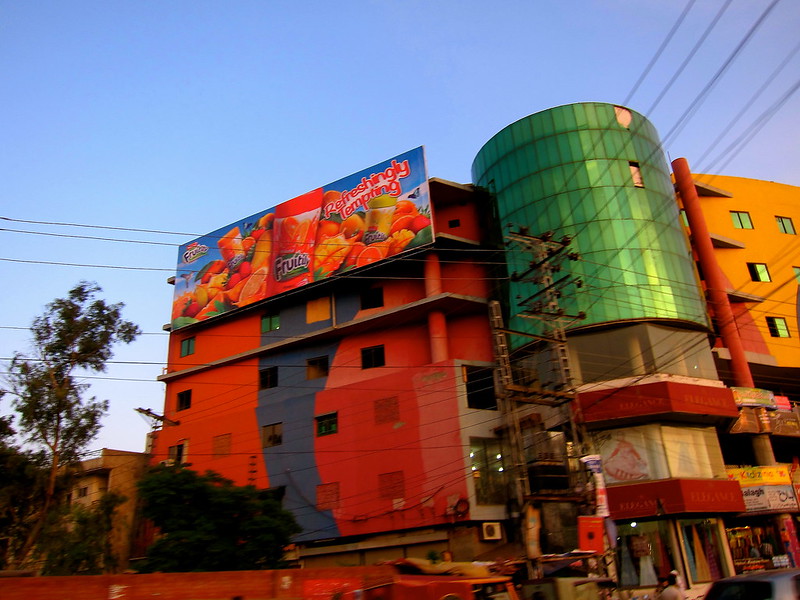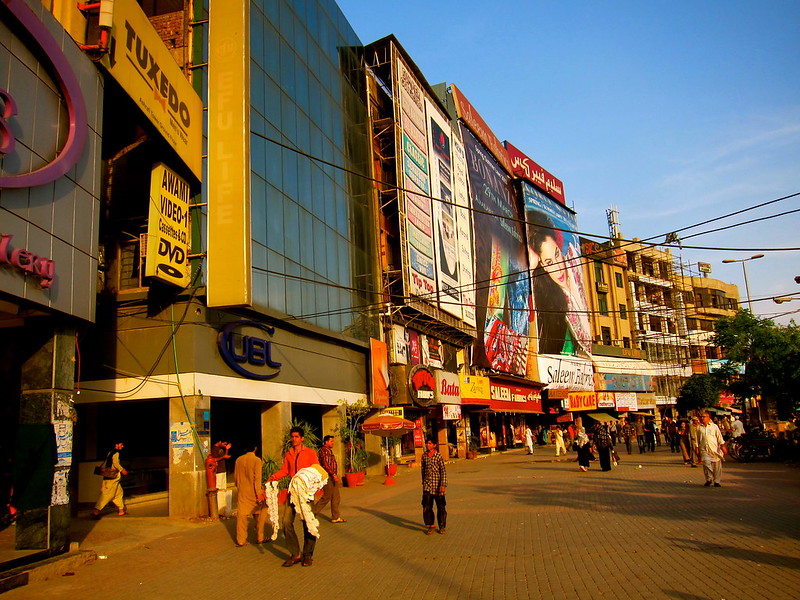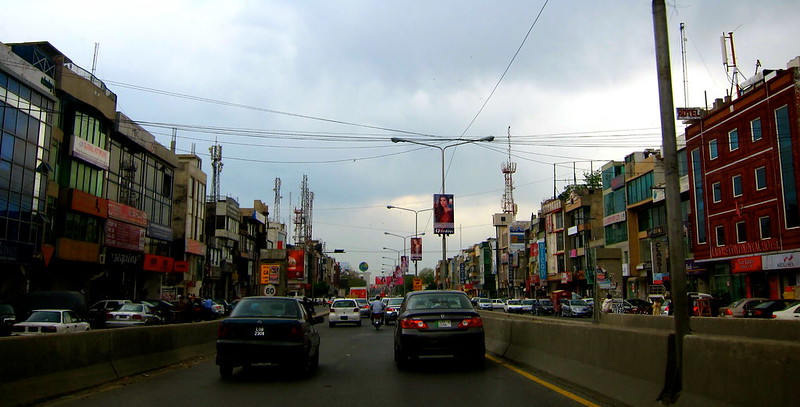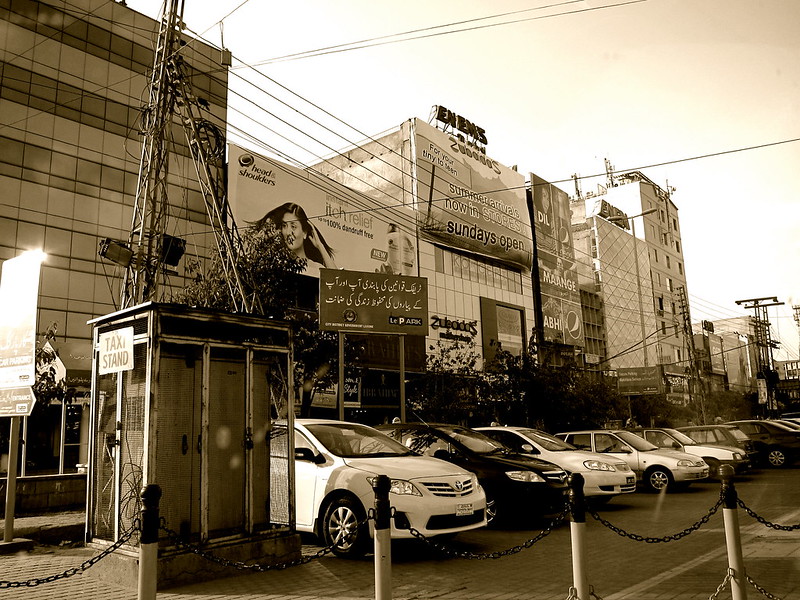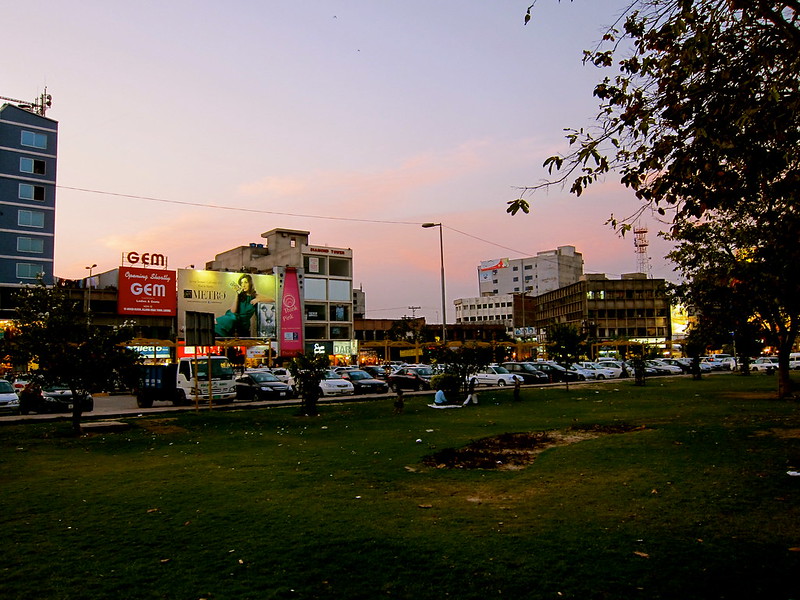This article is primarily written for a Western audience, and those who prefer to travel off the beaten path, at that.
Before leaving for Pakistan, I assumed, correctly, that the country does not get many tourists these days. In the span of several weeks, I saw only a handful of foreigners. I remember them vividly:
I lived in their homes, ate their home cooking, and attended their parties.
I did not stay in a hotel, though I did go inside one, and I was never alone, except for when I was in the airports in Karachi, Lahore, and Islamabad, and on a bus from Lahore to Rawalpindi.
I never had to order food by myself, or converse with strangers, though I did both.
I was never put in a dangerous situation, or even close to one.
I never saw violence during my time there, but I saw the effects of violence, in every checkpoint and armed security guard on the street.
When I returned to the states, I brought back over 2,000 photos, a suitcase filled with clothes and souvenirs, a great many lessons on life, and a few words of Urdu and Sindhi.
Before I left, I thought I would experience Pakistan in only one of two extremes:
The first extreme would be that of a war-torn, lawless country, in which I would narrowly escape danger and heroically live to tell my fellow Americans about it.
The other extreme would be a peaceful, carefree place, in which I would return from my journey to tell everyone that the media exaggerates the issues in Pakistan, and that it really is a safe place.
Not to anyone's surprise, I experienced neither of those extremes.
What I saw instead was the confluence of an old culture in a young country. A place that is unsure of itself, unsure of whether it should go forward or backward in time. Thousand-year-old rituals remain unchanged, expect now they are preserved through digital cameras and Skype, and Youtube - when it isn't banned. It is a place that is both inspired and angered by the West. It is a place where not even locals can agree on whether or not their country is safe.
These are the things I noticed in Pakistan, which I felt were the most different from any other country I have been. These are the things I wished someone would have told me about, the things I wished some other travel guide would have mentioned, or a travel blogger would have written about.
But nobody did.
So I am.
Here what everyone needs to know and understand before going to Pakistan.
1. Safety
Is there violence? Absolutely. But no one seems to know where it comes from or what to do about it. The people who are middle-aged remember Pakistan being a safe place with many foreign tourists and businesses. Slowly things began getting more and more unstable, until blasts and shootings became the norm. Now everyone is confused about how and why their peaceful country and friendly culture became so terrifying.
My feelings are best described in a conversation I had with a Pakistani woman, a stranger named Halimeh, at the airport in Karachi:
Me: "Everyone I've met in Pakistan has been so nice, so I wonder, who are these people that cause so much violence here?"
Halimeh: "I wonder about that too."
I have come to understand something. Pakistan is not a violent country. Pakistani culture is not a violent culture. But some people in Pakistan, a very few people who nobody seems to know, are violent.
During my two weeks in Pakistan the U.S. Consulate in Peshawar was car-bombed, and the U.S. government released another travel advisory urging citizens not to travel to Pakistan. You can imagine how I felt reading that from my iPhone in Islamabad. However, during my time in Pakistan, nothing bad or even slightly uncomfortable happened to me directly. I saw no bombings, shootings, assaults, and I was never mugged, hassled, or even insulted.
But like I said, although I did not experience violence, I experienced the effects of violence. Guns were omnipresent. At every building, store, and street there are armed guards with guns. Sometimes they are military personnel, as is the case with the airport and other government buildings. Other times they are city police, and most often they are private security guards hired by the stores themselves. The presence of so many guns made me feel uneasy. It was disquieting to be reminded me that I needed protection from something unseen.
2. Tourist Accommodations, or lack there of.
In addition to safety concerns, it is worth mentioning there is not a lot of tourist infrastructure in many parts of Pakistan. The mountains of Northern Pakistan were once popular tourist destinations for travelers, but tourism has been declining since the 1980s, with the rise of violence and disruption.
While on the road to Rawalpindi, I passed a building with a sign that said "Hostel," but it was a windowless shell, full of hay, that was evidently being used as a barn.
There are hotels, but western tourists will usually be limited to the global chains in major cities, and most have heightened security measures.
Public transportation is not easily accessible by foreigners. The families I stayed with all had drivers, and in Lahore I rented a car a driver (for US $30/day), but the driver did not speak English, so it is necessary to have someone there to translate. Driving is also extremely chaotic and scary, so I would not advocate doing it oneself.
Language is also a huge barrier. There are many signs in English in the big cities, but locals cannot be expected to communicate in English. The people I came in contact with were all educated, and therefore spoke English, but I would not expect this of ordinary strangers.
While traveling, some people showed great concern for me, as a woman, and as a foreigner. Some were worried and others were welcoming. I do have great confidence that a foreigner would be treated with great courtesy and respect in Pakistan, but as I believe this country is best experienced through its people, I advise knowing some locals before going.
3. Load Shedding
This was easily the biggest surprise I encountered. The first time the lights went out I felt sense of panic. When we have power outages in the U.S. they can last for hours, and it usually means something is terribly wrong with the system. In Pakistan, this is the normal order of the day. Also known as "brown-outs," these moments can last hours or sometimes days. In Islamabad and Lahore the power goes out at set intervals, alternating between one hour of power and one hour without. When the electricity is out that means there is no light, no air-conditioning or fans, no Internet, and no running water. This means that for hours or days, you may be hot, dry, and dirty.
Fortunately more affluent Pakistani's have generators in their homes, which kick on right as the power goes out. Several lights and fans are usually linked up to the generator, so although not every light in the house is functioning, there is at least a small light and fan in each room. However, if the power stays out too long the generators will run out of battery, and without power, the generator batteries cannot be recharged.
Businesses are not immune to load shedding either. In Lahore and Islamabad, I experienced power outages at malls, stores, hotels, restaurants, and even the airport. All businesses had generators, so there was only an awkward moment of darkness before the lights came back on and it was business as usually.
4. Food, Water, and Disease
I did not have too much of a problem with sanitation in Pakistan. I ate fresh home-cooked meals in local homes everyday, and I had no issues with that at all. It is widely known that tap water is not safe to drink, so most homes have bottled water containers. I also ate out at local restaurants, and even some street food, and it was perhaps the street food or the delicious street juices that caused me to have an annoying case of diarrhea. This lasted for a week and was incapacitating for a day, during which I was told by my hosts to drink only water and eat only plain white rice. I suspect this happened to me because my body was not accustomed to the local food, but my experience is nothing like the stories I have heard from travelers in India, who get ill for weeks from eating street food.
The problem some people may have with food in Pakistan, is that it can is hard to be vegetarian, vegan, gluten free, or diary free in this country. Not having a specialized diet myself, I was able to enjoy all the culinary wonder of Pakistan, however, I can't fathom how anyone who does not eat meat, gluten, or diary would get by in this country.
I stayed with a Hindu family my first week so I ate primarily vegetarian foods with some meat, but I imagine that I could have gone without eating meat at all. However, in the north and in Muslim homes, meat is prevalent, and even when t is not, breads and diary certainly are.
In terms of diseases, there are a number of recommended vaccinations that one should get before going to Pakistan. I didn't get any of them and I was fine but that is just my experience. Also, I would advise bringing malaria pills. Malaria is pretty common, and I must have gotten a hundred mosquito bites while I was there. Because of the expense and inconvenience of acquiring malaria pills in the states, I did not take any, and again I was fine, but this is not a risk I would advocate others taking.
5. Bathroom Hygiene
Bathrooms in Pakistan are an interesting experience. Most restrooms in Pakistan consist of a toilet, with a hose beside it. The purpose of the hose is to wash yourself after using the restroom. This is very clean and hygienic, and I got to really like it while I was there.
In the homes where I stayed, most people had toilet paper, which was used to dry off after using the hose, however, bathroom conditions varied widely in public places.
If you are in a mall, you will find a restroom with a raised toilet bowl, hose, and toilet paper. In mosques, road stops, parks, markets, and other public places, you are lucky if you find a squat toilet and bucket of water.
6. Servants
Servants were a huge source of culture shock for me in Pakistan. In the U.S., only the wealthiest people have servants, (or "staff" as we prefer to call them), and they almost never live with the family. In Pakistan, both middle and upper class families usually have full-time live-in staff.
I was awkward around the servants, because they were not treated equally like family or guests, nor where they treated like staff. I would not say that the servants were treated disrespectfully, because their treatment was customary in the context of culture, but they were not addressed in a way Americans would treat professional staff in the states. The presence of them made me uncomfortable, the way they silently entered rooms, mopped the floors around my feet, took dishes I had set down, and folded clothes I had laid out, all while lowering their heads and seeming invisible. From what I observed, the ideal behavior of servants was for them to be unnoticed, not to interfere with the daily life of the family. It was almost like the house cleaned itself.
In my experience, most homes have one, typically female, servant who cooks and cleans in the house. In some cases, the female servant lived with the family in servants quarters, but in other cases she left at night to return to her own home.
Every family had a driver. The driver was always male, and his role was to drive the family wherever they needed to go during that day. In times of festivity, when many guests may be staying at the home, multiple drivers may be hired to taxi people around.
Many homes also had private security guards. The guards stood watch at the gate of the house, and were usually armed with large guns.
7. Gifts
Gifts are customary in Pakistan. I had planned on giving gifts to each of my hosts, however this turned out to be problematic.
Tip 1: Avoid food gifts. I purchased boxes of chocolates for each family, but most homes are not air-conditioned, and after my suitcase sat in the Karachi heat for a day, the chocolates had melted. Although American chocolates may be popular gifts in Japan and East Asia, I do not recommend them for Pakistan because of this melting problem. If you are going to bring food, make sure it can withstand heat. Also remember that it is illegal to bring pork products or alcohol into Pakistan, which eliminates every good gift idea from Oregon.
Tip 2: Be persistent in gift-giving. Most people are taught to refuse a gift when offered. While I was there, I did not pick up on enough cultural nuance to understand if this was a display of humility, or if they genuinely were embarrassed to receive gifts. I had brought small make-up containers to give as mini-gifts to the girls in Pakistan, but in almost all cases my gifts were refused. At first I was surprised and confused, but then I persisted, bringing it up casually a few times, and even insisting. Once, a group of girls I had offered gifts to firmly refused, but later in the day came back and asked if the offer was still standing, so at last they accepted my silly presents. I learned later that they had asked their mothers if they could accept my gifts, and consulted with each other before feeling confident enough to accept them.
Although as a guest in Pakistan it is difficult to give gifts, people will have not problem giving them to you! In fact I felt humbled by the extravagance of the gifts that were bestowed upon me as a guest. I believed it was enough of a gift just to stay in someone's house and be fed, but in every case I was treated to meals and given a wide array of things from jewelry to books, DVDs, and local crafts. It was overwhelming and humbling and I was often at a loss for how to respond.
I have no good advice in this category, expect to prepare gifts for your friends and hosts, and to be prepared to be wildly outdone with their gifts.
8. The Male/Female Dynamic
This is another great source of culture shock for an American in Pakistan. Everything about the way men and women act is different in this country. Men and women occupy very different spaces in Pakistan, both literally and figuratively.
Upon landing in Karachi International Airport, there are separate lines for males, families, and unaccompanied ladies. At security checkpoints at airports and malls, men and women enter different lines and interact with guards of their own sex. At the wedding I attended, men and women ate in divided sections of the park, and only co-mingled inside the tent.
Almost without exception, women live at home with their families until they are married, and then they transfer to the homes of their husband's families. Men are generally expected to live with their families forever, and many do, though I saw several cases in which young men and moved out of their parent's house to work in another city or another country. Most of the young men I met fell into this category, and had no intention of ever moving back home to live with their parents. Young women, on the other hand, in all cases I witnessed, lived with their parents, and had no intention of moving until they got married.
Family is a central part of life in Pakistan, and so I was often asked about my family, specifically, the jobs of my parents, if I had siblings, if I was married. In the U.S., these are very personal questions and Americans often do not ask them because of the embarrassing answers they can elicit. Many Americans with complicated family histories (divorce, single parenthood, abuse) find it difficult to talk about their families, so we usually refrain from asking.
9. Dress
In terms of dress, most men wore tradition shalwar kameez or western jeans and shirts, however, for women this varied considerably. The women in the families who were hosting me often wore shalwar kameez or variations of that, but I saw many women on the street in abayas and covered their faces with niqabs, as well as burqas. As a woman, you are not expected to cover your head unless you are in a mosque or religious place, however, don't be surprised that many women do. I'm sure a person could get around fine wearing western clothing, but I personally felt more comfortable to wear the shalwar kameez and throw the dupatta over my head in a thick crowd.
10. Religion
Religion is omnipresent in Pakistan. Mosques line the street corners in all major cities, and the Islamic call to prayer can be heard five times a day, even in the airport.
While flying on Pakistan Airlines, a short prayer was said before take off, and it was translated on the screen in front of me, right before they discussed safety protocol. On a bus from Lahore to Rawalpindi, a prayer was also said before departure. Although prayers are common throughout the day, I did not observe anyone praying in public, and I did not feel that I was expected to participate in the praying. The most peaceful time of the day was when I heard the call to prayer from the mosque towers. This became a familiar sound each day and a sound I have grown to miss since returning to the states.
Because religion is so ingrained in the culture, it is one of the first questions asked of a stranger. This was difficult for me because I have no formal religion, but if pressed I will say I'm Buddhist. A typical dialogue looks like this:
Pakistani: And what is your religion? Christian?
Me: Well, no, I don't really have a religion.
Pakistani: What do you mean? What about your parents?
Me: I guess they don't really have a religion either.
Pakistani: Well, then what does it say on your passport?
Me: My passport doesn't have my religion on it.
Pakistani: What about your driver's license?
Me: It's not on there either.
Pakistani:.....
After many of these conversations, I just started telling people I was Buddhist, which is sort-of-sometimes-in-a-way true. Of course, everyone was very open to this. There is absolutely no expectation that I be a Muslim, and I'm sure that I would be still be accepted as a Christian or a person of other faiths. They merely ask because they are trying to figure me out. In a culture where religion dictates so much of a person's daily life and identity, they are using that piece of information to decide what type of person I am. My response that I had no religion was troubling to so many people because then they could not place me in a certain set of behaviors or norms. In the U.S., religion is also a personal topic and one to be avoided, so my advice to westerns would be to come prepared to answer for your religion, but not to be afraid to have this conversation because Pakistani people are widely accepting of many faiths.
Lastly, I want to mention the relationship faith has to the identity of a Pakistani. Religion is assigned at birth, and it cannot be changed in the course of one's lifetime. The possibility of conversion is, based on my conversations, nonexistant. Religion not only dictates daily life, but also who a person can marry. A Muslim man can marry a Muslim woman or a Christian woman, but a Muslim woman can only marry a Muslim man. Hindus and Muslims can also not intermarry. It is also not possible to hide one's religion, because it permeates in every aspect on one's identity, including a person's name. For example, Kumar in understood to be a Hindu name, and Khan is understood to be a Muslim name.
Although these rules are strict, I want to stress that a Pakistani's religious identity does not always reflect their religious beliefs. For example, I met a Hindu who believed in Sikhism, and I met a Muslim who believed in Catholicism. The Muslim woman may attend Catholic school and go to mass, she may pray the rosary and even believe in Catholicism in her heart, but she is not a Catholic, because she was born a Muslim and will remain a Muslim all her life. Therefore, asking for someone's religion is not asking for their personal beliefs. A Pakistani may have fluid and multifaceted beliefs, but their religion is their assigned identity. This is very different from the U.S., where religion is closely linked with personal belief. If I say I am Christian, it is assumed that I believe in the teachings of Jesus Christ, whereas in Pakistan, no such assumption would be made.
It is easy for a westerner who experiences the prayers on the plane, the women in burqas, and omnipresence of religion in everyday life, to assume that Pakistan is a fanatic country. However, I would argue that this is not true. From my experience, that fact that religion is so omnipresent in their country and not in other countries, makes Pakistanis acutely aware of the differences of outsiders, and the diverse world in which we all live. The Pakistanis I met were, without exception, open-minded and well-educated. They were all extremely hospitable and welcoming. They were curious about me, about America, and about the world. And they challenged me to think differently about myself, about America, and about the world.
They are a people from which much can be learned.
Before leaving for Pakistan, I assumed, correctly, that the country does not get many tourists these days. In the span of several weeks, I saw only a handful of foreigners. I remember them vividly:
- A middle-aged white man, with an Asian woman (probably his wife), and their toddler, at Gloria Jean's in the Doleman Mall in Karachi. The man was wearing a suit, and talking on a cell phone. He did not look like a tourist, so I assume he was a business man.
- A young, and very fashionably dressed black couple at a rooftop lounge in Islamabad. Most foreigners in Islamabad are embassy workers, journalists, and a few people from NGOs. This couple could very well have been part of the Islamabad expat community. They seemed too well-dressed to be temporary visitors (it's hard to be well dressed when you live out of a suitcase), and it seemed like they had been to this lounge before.
I lived in their homes, ate their home cooking, and attended their parties.
I did not stay in a hotel, though I did go inside one, and I was never alone, except for when I was in the airports in Karachi, Lahore, and Islamabad, and on a bus from Lahore to Rawalpindi.
I never had to order food by myself, or converse with strangers, though I did both.
I was never put in a dangerous situation, or even close to one.
I never saw violence during my time there, but I saw the effects of violence, in every checkpoint and armed security guard on the street.
When I returned to the states, I brought back over 2,000 photos, a suitcase filled with clothes and souvenirs, a great many lessons on life, and a few words of Urdu and Sindhi.
Before I left, I thought I would experience Pakistan in only one of two extremes:
The first extreme would be that of a war-torn, lawless country, in which I would narrowly escape danger and heroically live to tell my fellow Americans about it.
The other extreme would be a peaceful, carefree place, in which I would return from my journey to tell everyone that the media exaggerates the issues in Pakistan, and that it really is a safe place.
Not to anyone's surprise, I experienced neither of those extremes.
What I saw instead was the confluence of an old culture in a young country. A place that is unsure of itself, unsure of whether it should go forward or backward in time. Thousand-year-old rituals remain unchanged, expect now they are preserved through digital cameras and Skype, and Youtube - when it isn't banned. It is a place that is both inspired and angered by the West. It is a place where not even locals can agree on whether or not their country is safe.
These are the things I noticed in Pakistan, which I felt were the most different from any other country I have been. These are the things I wished someone would have told me about, the things I wished some other travel guide would have mentioned, or a travel blogger would have written about.
But nobody did.
So I am.
Here what everyone needs to know and understand before going to Pakistan.
1. Safety
 |
| police car in Karachi |
Is there violence? Absolutely. But no one seems to know where it comes from or what to do about it. The people who are middle-aged remember Pakistan being a safe place with many foreign tourists and businesses. Slowly things began getting more and more unstable, until blasts and shootings became the norm. Now everyone is confused about how and why their peaceful country and friendly culture became so terrifying.
My feelings are best described in a conversation I had with a Pakistani woman, a stranger named Halimeh, at the airport in Karachi:
Me: "Everyone I've met in Pakistan has been so nice, so I wonder, who are these people that cause so much violence here?"
Halimeh: "I wonder about that too."
I have come to understand something. Pakistan is not a violent country. Pakistani culture is not a violent culture. But some people in Pakistan, a very few people who nobody seems to know, are violent.
During my two weeks in Pakistan the U.S. Consulate in Peshawar was car-bombed, and the U.S. government released another travel advisory urging citizens not to travel to Pakistan. You can imagine how I felt reading that from my iPhone in Islamabad. However, during my time in Pakistan, nothing bad or even slightly uncomfortable happened to me directly. I saw no bombings, shootings, assaults, and I was never mugged, hassled, or even insulted.
But like I said, although I did not experience violence, I experienced the effects of violence. Guns were omnipresent. At every building, store, and street there are armed guards with guns. Sometimes they are military personnel, as is the case with the airport and other government buildings. Other times they are city police, and most often they are private security guards hired by the stores themselves. The presence of so many guns made me feel uneasy. It was disquieting to be reminded me that I needed protection from something unseen.
2. Tourist Accommodations, or lack there of.
In addition to safety concerns, it is worth mentioning there is not a lot of tourist infrastructure in many parts of Pakistan. The mountains of Northern Pakistan were once popular tourist destinations for travelers, but tourism has been declining since the 1980s, with the rise of violence and disruption.
While on the road to Rawalpindi, I passed a building with a sign that said "Hostel," but it was a windowless shell, full of hay, that was evidently being used as a barn.
There are hotels, but western tourists will usually be limited to the global chains in major cities, and most have heightened security measures.
 |
| And how many lanes does this road have? |
Public transportation is not easily accessible by foreigners. The families I stayed with all had drivers, and in Lahore I rented a car a driver (for US $30/day), but the driver did not speak English, so it is necessary to have someone there to translate. Driving is also extremely chaotic and scary, so I would not advocate doing it oneself.
Language is also a huge barrier. There are many signs in English in the big cities, but locals cannot be expected to communicate in English. The people I came in contact with were all educated, and therefore spoke English, but I would not expect this of ordinary strangers.
While traveling, some people showed great concern for me, as a woman, and as a foreigner. Some were worried and others were welcoming. I do have great confidence that a foreigner would be treated with great courtesy and respect in Pakistan, but as I believe this country is best experienced through its people, I advise knowing some locals before going.
3. Load Shedding
This was easily the biggest surprise I encountered. The first time the lights went out I felt sense of panic. When we have power outages in the U.S. they can last for hours, and it usually means something is terribly wrong with the system. In Pakistan, this is the normal order of the day. Also known as "brown-outs," these moments can last hours or sometimes days. In Islamabad and Lahore the power goes out at set intervals, alternating between one hour of power and one hour without. When the electricity is out that means there is no light, no air-conditioning or fans, no Internet, and no running water. This means that for hours or days, you may be hot, dry, and dirty.
Fortunately more affluent Pakistani's have generators in their homes, which kick on right as the power goes out. Several lights and fans are usually linked up to the generator, so although not every light in the house is functioning, there is at least a small light and fan in each room. However, if the power stays out too long the generators will run out of battery, and without power, the generator batteries cannot be recharged.
Businesses are not immune to load shedding either. In Lahore and Islamabad, I experienced power outages at malls, stores, hotels, restaurants, and even the airport. All businesses had generators, so there was only an awkward moment of darkness before the lights came back on and it was business as usually.
4. Food, Water, and Disease
 |
| a convenience store |
The problem some people may have with food in Pakistan, is that it can is hard to be vegetarian, vegan, gluten free, or diary free in this country. Not having a specialized diet myself, I was able to enjoy all the culinary wonder of Pakistan, however, I can't fathom how anyone who does not eat meat, gluten, or diary would get by in this country.
I stayed with a Hindu family my first week so I ate primarily vegetarian foods with some meat, but I imagine that I could have gone without eating meat at all. However, in the north and in Muslim homes, meat is prevalent, and even when t is not, breads and diary certainly are.
In terms of diseases, there are a number of recommended vaccinations that one should get before going to Pakistan. I didn't get any of them and I was fine but that is just my experience. Also, I would advise bringing malaria pills. Malaria is pretty common, and I must have gotten a hundred mosquito bites while I was there. Because of the expense and inconvenience of acquiring malaria pills in the states, I did not take any, and again I was fine, but this is not a risk I would advocate others taking.
5. Bathroom Hygiene
 |
| Worst case scenario |
Bathrooms in Pakistan are an interesting experience. Most restrooms in Pakistan consist of a toilet, with a hose beside it. The purpose of the hose is to wash yourself after using the restroom. This is very clean and hygienic, and I got to really like it while I was there.
In the homes where I stayed, most people had toilet paper, which was used to dry off after using the hose, however, bathroom conditions varied widely in public places.
If you are in a mall, you will find a restroom with a raised toilet bowl, hose, and toilet paper. In mosques, road stops, parks, markets, and other public places, you are lucky if you find a squat toilet and bucket of water.
6. Servants
Servants were a huge source of culture shock for me in Pakistan. In the U.S., only the wealthiest people have servants, (or "staff" as we prefer to call them), and they almost never live with the family. In Pakistan, both middle and upper class families usually have full-time live-in staff.
I was awkward around the servants, because they were not treated equally like family or guests, nor where they treated like staff. I would not say that the servants were treated disrespectfully, because their treatment was customary in the context of culture, but they were not addressed in a way Americans would treat professional staff in the states. The presence of them made me uncomfortable, the way they silently entered rooms, mopped the floors around my feet, took dishes I had set down, and folded clothes I had laid out, all while lowering their heads and seeming invisible. From what I observed, the ideal behavior of servants was for them to be unnoticed, not to interfere with the daily life of the family. It was almost like the house cleaned itself.
In my experience, most homes have one, typically female, servant who cooks and cleans in the house. In some cases, the female servant lived with the family in servants quarters, but in other cases she left at night to return to her own home.
Every family had a driver. The driver was always male, and his role was to drive the family wherever they needed to go during that day. In times of festivity, when many guests may be staying at the home, multiple drivers may be hired to taxi people around.
Many homes also had private security guards. The guards stood watch at the gate of the house, and were usually armed with large guns.
7. Gifts
Gifts are customary in Pakistan. I had planned on giving gifts to each of my hosts, however this turned out to be problematic.
Tip 1: Avoid food gifts. I purchased boxes of chocolates for each family, but most homes are not air-conditioned, and after my suitcase sat in the Karachi heat for a day, the chocolates had melted. Although American chocolates may be popular gifts in Japan and East Asia, I do not recommend them for Pakistan because of this melting problem. If you are going to bring food, make sure it can withstand heat. Also remember that it is illegal to bring pork products or alcohol into Pakistan, which eliminates every good gift idea from Oregon.
Tip 2: Be persistent in gift-giving. Most people are taught to refuse a gift when offered. While I was there, I did not pick up on enough cultural nuance to understand if this was a display of humility, or if they genuinely were embarrassed to receive gifts. I had brought small make-up containers to give as mini-gifts to the girls in Pakistan, but in almost all cases my gifts were refused. At first I was surprised and confused, but then I persisted, bringing it up casually a few times, and even insisting. Once, a group of girls I had offered gifts to firmly refused, but later in the day came back and asked if the offer was still standing, so at last they accepted my silly presents. I learned later that they had asked their mothers if they could accept my gifts, and consulted with each other before feeling confident enough to accept them.
Although as a guest in Pakistan it is difficult to give gifts, people will have not problem giving them to you! In fact I felt humbled by the extravagance of the gifts that were bestowed upon me as a guest. I believed it was enough of a gift just to stay in someone's house and be fed, but in every case I was treated to meals and given a wide array of things from jewelry to books, DVDs, and local crafts. It was overwhelming and humbling and I was often at a loss for how to respond.
I have no good advice in this category, expect to prepare gifts for your friends and hosts, and to be prepared to be wildly outdone with their gifts.
8. The Male/Female Dynamic
 |
| sign at Karachi International Airport |
Upon landing in Karachi International Airport, there are separate lines for males, families, and unaccompanied ladies. At security checkpoints at airports and malls, men and women enter different lines and interact with guards of their own sex. At the wedding I attended, men and women ate in divided sections of the park, and only co-mingled inside the tent.
Almost without exception, women live at home with their families until they are married, and then they transfer to the homes of their husband's families. Men are generally expected to live with their families forever, and many do, though I saw several cases in which young men and moved out of their parent's house to work in another city or another country. Most of the young men I met fell into this category, and had no intention of ever moving back home to live with their parents. Young women, on the other hand, in all cases I witnessed, lived with their parents, and had no intention of moving until they got married.
Family is a central part of life in Pakistan, and so I was often asked about my family, specifically, the jobs of my parents, if I had siblings, if I was married. In the U.S., these are very personal questions and Americans often do not ask them because of the embarrassing answers they can elicit. Many Americans with complicated family histories (divorce, single parenthood, abuse) find it difficult to talk about their families, so we usually refrain from asking.
9. Dress
 |
| dress code at the mosque |
Religion is omnipresent in Pakistan. Mosques line the street corners in all major cities, and the Islamic call to prayer can be heard five times a day, even in the airport.
While flying on Pakistan Airlines, a short prayer was said before take off, and it was translated on the screen in front of me, right before they discussed safety protocol. On a bus from Lahore to Rawalpindi, a prayer was also said before departure. Although prayers are common throughout the day, I did not observe anyone praying in public, and I did not feel that I was expected to participate in the praying. The most peaceful time of the day was when I heard the call to prayer from the mosque towers. This became a familiar sound each day and a sound I have grown to miss since returning to the states.
Because religion is so ingrained in the culture, it is one of the first questions asked of a stranger. This was difficult for me because I have no formal religion, but if pressed I will say I'm Buddhist. A typical dialogue looks like this:
Pakistani: And what is your religion? Christian?
Me: Well, no, I don't really have a religion.
Pakistani: What do you mean? What about your parents?
Me: I guess they don't really have a religion either.
Pakistani: Well, then what does it say on your passport?
Me: My passport doesn't have my religion on it.
Pakistani: What about your driver's license?
Me: It's not on there either.
Pakistani:.....
After many of these conversations, I just started telling people I was Buddhist, which is sort-of-sometimes-in-a-way true. Of course, everyone was very open to this. There is absolutely no expectation that I be a Muslim, and I'm sure that I would be still be accepted as a Christian or a person of other faiths. They merely ask because they are trying to figure me out. In a culture where religion dictates so much of a person's daily life and identity, they are using that piece of information to decide what type of person I am. My response that I had no religion was troubling to so many people because then they could not place me in a certain set of behaviors or norms. In the U.S., religion is also a personal topic and one to be avoided, so my advice to westerns would be to come prepared to answer for your religion, but not to be afraid to have this conversation because Pakistani people are widely accepting of many faiths.
Lastly, I want to mention the relationship faith has to the identity of a Pakistani. Religion is assigned at birth, and it cannot be changed in the course of one's lifetime. The possibility of conversion is, based on my conversations, nonexistant. Religion not only dictates daily life, but also who a person can marry. A Muslim man can marry a Muslim woman or a Christian woman, but a Muslim woman can only marry a Muslim man. Hindus and Muslims can also not intermarry. It is also not possible to hide one's religion, because it permeates in every aspect on one's identity, including a person's name. For example, Kumar in understood to be a Hindu name, and Khan is understood to be a Muslim name.
Although these rules are strict, I want to stress that a Pakistani's religious identity does not always reflect their religious beliefs. For example, I met a Hindu who believed in Sikhism, and I met a Muslim who believed in Catholicism. The Muslim woman may attend Catholic school and go to mass, she may pray the rosary and even believe in Catholicism in her heart, but she is not a Catholic, because she was born a Muslim and will remain a Muslim all her life. Therefore, asking for someone's religion is not asking for their personal beliefs. A Pakistani may have fluid and multifaceted beliefs, but their religion is their assigned identity. This is very different from the U.S., where religion is closely linked with personal belief. If I say I am Christian, it is assumed that I believe in the teachings of Jesus Christ, whereas in Pakistan, no such assumption would be made.
It is easy for a westerner who experiences the prayers on the plane, the women in burqas, and omnipresence of religion in everyday life, to assume that Pakistan is a fanatic country. However, I would argue that this is not true. From my experience, that fact that religion is so omnipresent in their country and not in other countries, makes Pakistanis acutely aware of the differences of outsiders, and the diverse world in which we all live. The Pakistanis I met were, without exception, open-minded and well-educated. They were all extremely hospitable and welcoming. They were curious about me, about America, and about the world. And they challenged me to think differently about myself, about America, and about the world.
They are a people from which much can be learned.
